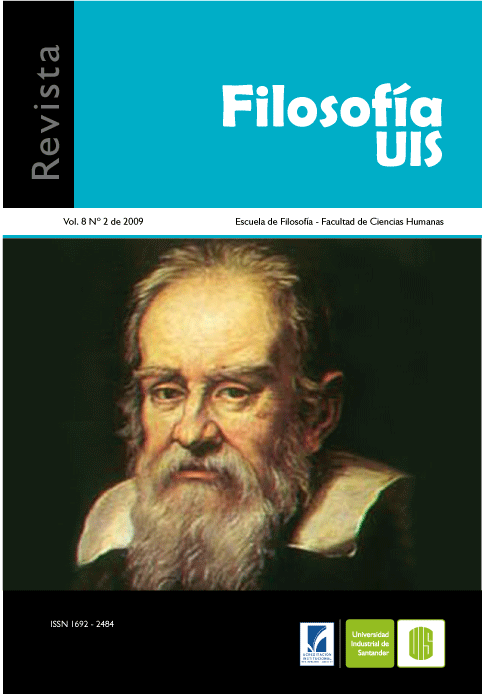Published 2009-12-16
Keywords
- philosophy,
- architecture,
- architectural object,
- metaphysics,
- Heidegger
How to Cite
Copyright (c) 2009 Tomasz Drewniak

This work is licensed under a Creative Commons Attribution 4.0 International License.
Abstract
Philosophy, just as it does with other phenomena, conceptualizes architectonic work each time selecting a definite architectonic object symbolizing a supersensory principle of the world. The examples of such objects, which were analyzed, are temple (Plato), edifice (Kant) and farmhouse (Heidegger). This paper presents how philosophy takes over from architecture the interrelationships, and through them, it articulates its own domain of problems. On the basis of architectonic metaphor, philosophy constructs notional framework enabling presenting the world as an entity: project, work, Demiurg, matter. This paper aims to reconstruct the inherent relationship between the architectonic of philosophy and metaphysics (in the Heideggerian notion). It shows the connection between the metaphysical project thinking and poetic project one - the connection which is a condition of architectonic existence of philosophy.
Downloads
References
- Burckhardt, Jacob (1985), “Das Individuum und das Allgemeine“, Weltgeschichtliche Betrachtungen, Leipzig, Dieterich’sche Verlagsbuchhandlung, pp.198-233.
- Deleuze, Gilles (1995), Die Falte. Leibniz und der Barock, Frankfurt am Main, Suhrkamp
- Euripides (1913), “Trojan women“, Euripidis Fabulae. Ed. Gilbert Murray, Oxford, Clarendon Press, vol. 2.
- Heidegger, Martin (1961), Nietzsche, Pfullingen, Neske, vol.1-2.
- Heidegger, Martin (1971), “Building, Dwelling, Thinking”, Poetry, Language, Thought, Trans. Hofstadter A., New York, Harper and Row. On line. http://pratt. edu/~arch543p/ readings/Heidegger.html. 07-05-2008.
- Heidegger, Martin (1977), “Die Zeit des Weltbildes”, Holzwege, Frankfurt am Main, Vittorio Klostermann, pp.69-104.
- Heidegger, Martin (1989), Beiträge zur Philosophie (Vom Ereignis), Frankfurt am Main, Vittorio Klostermann.
- Heidegger, Martin (1986), Einführung in die Metaphysik, Frankfurt am Main: Vittorio Klostermann.
- Heidegger, Martin (1993), Hölderlins Hymne »Der Ister«, Frankfurt am Main: Vittorio Klostermann.
- Heidegger, Martin (1998), Kant und das Problem der Metaphysik, Frankfurt am Main, Vittorio Klostermann.
- Heidegger, Martin (1977), “Der Ursprung des Kunstwerkes“, Holzwege, Frankfurt am Main, Vittorio Klostermann, pp.7-68.
- Heidegger, Martin (2000), “Bauen, Wohnen, Denken”, Vorträge und Aufsätze, Frankfurt am Main, Vittorio Klostermann, p.139-156.
- Heidegger, Martin (2000), “Das Ding”, Vorträge und Aufsätze. Frankfurt am Main: Vittorio Klostermann, pp. 157-179.
- Heidegger, Martin (2004), Rozprawa Schellinga o istorie ludzkie wolności [1809] (Schellings Abhandlung über das Wesen der menschlichen Freiheit), Trans. R. Marszałek, Warszawa, KR.
- Kant, Immanuel (1949), Prolegomena to Any Future Metaphysics, Trans. Carus P., Chicago, The Open Court publishing company. On line. http://www.class.uidaho.edu/ mickelsen/texts/ prolegom.txt. 07-05-2008.
- Kant, Immanuel (1952), The Critique of Judgment, Trans. Meredith J. C., Oxford,Clarendon Press. On line. http://etext.library.adelaide.edu.au/k/kant/ immanuel/k16j. 07-05-2008.
- Kant, Immanuel (1999), The Critique of Pure Reason, Trans. Meiklejohn J. M. D., London, Cambridge University Press. On line. http://www.gutenberg.org/ebooks/4280. 07-05-2008.
- Nietzsche, Friedrich (1968), Twilight of the Idols, Trans. W. Kaufmann, New York:Penguin Books. On line. http://www.davemckay.co.uk/philosophy/ nietzsche/nietzsche.php. 06-05-2008.
- Parnicki-Pudełko Stefan (1985), Architektura starożytnej Grecji, Warszawa, Arkady.
- Plato (1925), ”Critias”, Plato in Twelve Volumes, Trans. Lamb W.R.M., London, William Heinemann Ltd., vol. 9. On line. http://www.perseus.tufts.edu/cgi-bin/ptext?doc. 05-05.2008.
- Plato (1925 ), “Timaeus”, Plato in Twelve Volumes, Trans. Lamb W.R.M., London, William Heinemann Ltd., vol. 9. On line. http://www.perseus.tufts.edu/cgi-bin/ptext?doc. 05-05.2008.
- Plato (1926) Laws, Ed. and trans. Bury R. G., London-New York, William Heinemann & G. P. Putnam’s Sons, vol.1-2.
- Plato (1969) ”Republic”, Plato in Twelve Volumes, Trans. Shorey P., London, William Heinemann Ltd., vols. 5-6. On line. http://www.perseus.tufts.edu/cgi-bin/eptext?doc. 05-05.2008.
- Różdżeński, Roman (1991), Kant i Heidegger a problem metafizyki, Kraków, Wydawnictwo Naukowe Papieskiej Akademii Teologicznej.
- Schopenhauer, Arthur (1913), “Die Welt als Wille und Vorstellung“, Schopenhauers sämtliche Werke, Berlin, U. Weichert Verlag, vol.2, pp.5-460.
- Vidal-Naquet, Pierre (2003), “Studium pewnej ambiwalencji: rzemieślnicy w państwie platońskim”, Czarny łowca. Formy myśli i życia społecznego w świecie greckim (Le chasseur noir. Formes de pensée et formes de société dans le monde grec), Trans. Trzcionkowski L., Warszawa, Proszynski i s-ka, pp.292-313.
- Wallis, Mieczysław (2004), “O świecie przedmiotów estetycznych”, Wybór pism estetycznych, Kraków, Universitas, pp.6-20.
